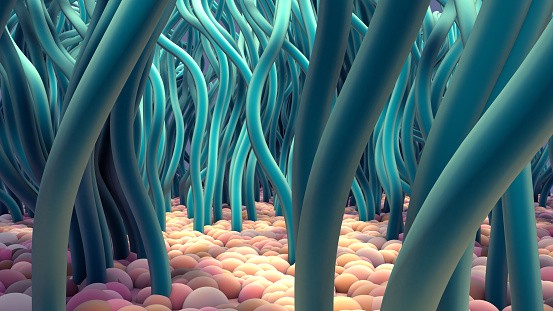
The Ciliary Connection: Understanding The Link Between Cilia And Genetic Disorders
Cilia are microscopic hair-like structures found on the surface of many cells in the body. These organelles have a wide range of functions, including playing an important role in cellular communication and movement. Recent research has uncovered a link between cilia dysfunction and genetic disorders, thus raising questions about their connection to human health and disease. This article will explore the relationship between cilia and genetic disorders, examining both current research findings as well as possible implications for medical care.
Genetic disorders can have serious consequences for those affected by them, ranging from physical disabilities to life-threatening conditions. While genetics is often thought of as playing a key role in determining one’s susceptibility to certain diseases, recent studies suggest that ciliary malfunction may also be involved in some cases. By understanding how these tiny organelles are linked to genetic disorders, we can gain insight into potential treatments or preventive measures that could improve quality of life for individuals suffering from such ailments.
This article will provide readers with an overview of what current evidence suggests regarding the links between ciliar frailty and genetic disorder development. It will discuss the latest scientific developments related to this topic, along with implications that they may hold for future healthcare practices. In doing so, it hopes to shed light on this increasingly relevant area of medicine while giving patients greater clarity on their own condition or risk factors associated with it.
Definition Of Cilia
Have you ever heard of cilia? No, not the Latin term for eyelashes! Cilia are cellular projections that can be found on most cell surfaces and have a variety of functions depending upon their location. Although they appear simple in structure and name, these tiny structures play an essential role in many biological processes.
Let’s start with understanding what cilia actually are: A cilium is composed of nine doublets surrounded by a membrane and contains various proteins responsible for its movement as well as organizing cargo transportation along the length of the projection. Their small size belies their capacity to move or beat in order to propel liquid films around cells – though this behavior depends heavily upon the type of cell they inhabit.
Additionally, cilia also function in sensory reception; they detect changes in respiration rate, temperature, and pressure among other things. They even help regulate human development during embryogenesis by providing vital signals between cells. As such, it stands to reason that genetic disorders linked to ciliary dysfunction may lead to serious health issues if left untreated.
Types Of Genetic Disorders Linked To Ciliary Dysfunction

Ciliary dyskinesia is a broad term that describes any type of dysfunction associated with cilia, which are tiny microscopic hairs that line the respiratory and reproductive tract. This disorder can present itself in many different forms, depending on the underlying cause. Primary ciliary dyskinesia (PCD) is an umbrella term used to describe a collection of genetic disorders affecting the structure and/or function of cilia.
These disorders include Kartagener syndrome and situs inversus, both of which are characterized by impaired motility or lack thereof within ciliated cells. In addition, some other types of ciliary disorder may result from abnormal production or loss of proteins required for normal functioning of these structures as well as defects at the level of cell division without necessarily affecting their integrity directly.
Ultimately, all these conditions have been linked to impairments in proper clearance mechanisms leading to recurrent infections and compromised immune responses.
Treatment Options For Ciliary-Related Disorders
Now that we understand the link between cilia and genetic disorders, let’s take a look at treatment options. Treatment for ciliary-related disorders depends on the type of disorder present. For someone with a genetic disorder, treatments may include care coordination to manage symptoms and access resources, as well as medications or surgical interventions. On the other hand, treatment for ciliary dysfunction might involve lifestyle modifications or medications to alleviate symptoms such as respiratory infections or digestive issues.
In any case, figuring out which types of treatments will be most effective requires careful monitoring of both physical and psychological health through regular visits to healthcare providers. Depending on the specific condition affecting an individual, specialists in various fields (such as pulmonology, gastroenterology) may need to be consulted for diagnosis and management. In addition to this medical support, it is also important for patients to have emotional support from loved ones throughout their journey towards wellness.
Conclusion
In conclusion, cilia are essential to human health and wellbeing. Without them, our bodies may be unable to function properly, leading to various genetic disorders. Thanks to recent advances in medical research, we now have a better understanding of the connection between cilia and these diseases. We know that certain treatments can help address some of the issues related to ciliary dysfunction, making it possible for people with these illnesses to lead healthier lives.
While there is still much work to be done when it comes to diagnosing and treating ciliary-related disorders, I am hopeful that one day soon more effective therapies will become available. Until then, it’s important for us all – patients and healthcare providers alike – to continue educating ourselves on this important issue so that we can provide support and care for those affected by ciliary-related illnesses.
Through increased awareness and collaboration among researchers, clinicians, and patient advocates, together we can make great strides towards improving outcomes for those living with these conditions.
